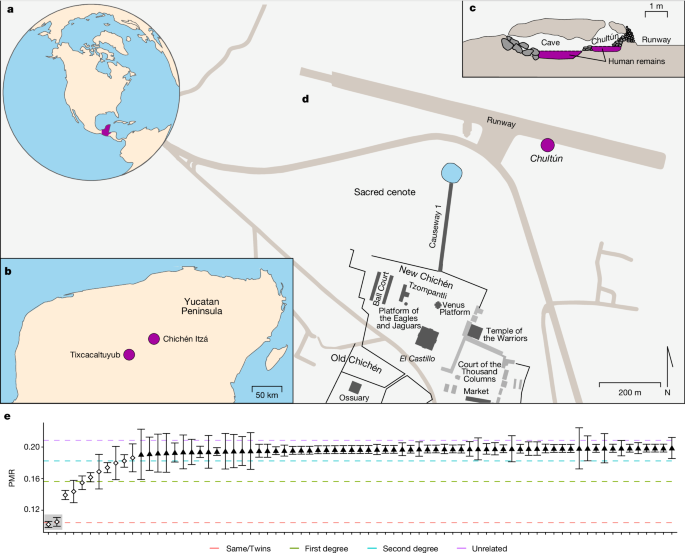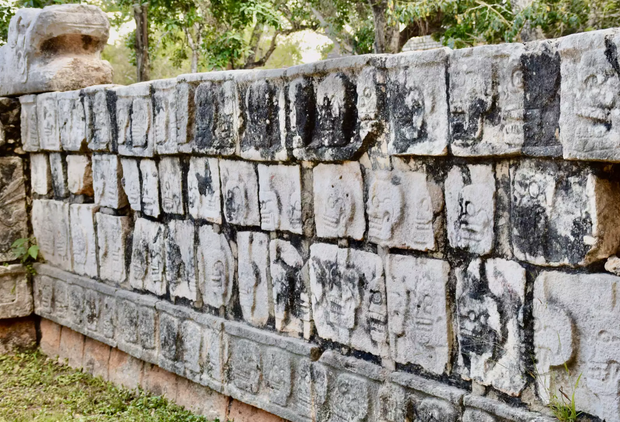
The ancient Maya city of Chichén Itzá in Mexico's Yucatán Peninsula has long been associated with human sacrifice, with hundreds of bones unearthed from temples, a sacred sinkhole and other underground caverns. A long-held misconception is that the victims were often young and female - an impression that has stuck in the contemporary imagination and become hard to dislodge even as more recent research has suggested that both men and women were among those sacrificed as well as children.
A study published in the journal Nature adds unexpected detail to this more complex picture. Researchers analyzed genome-wide data obtained from 64 subadult individuals dating to around AD 500-900 found in a subterranean mass burial near the Sacred Cenote in the ceremonial center of Chichén Itzá. The analysis revealed that all victims were young boys, many of whom were closely related. Some sets of twins were identified among the remains.
This finding challenges an earlier idea that females sacrificed in fertility rites were interred there and suggests that related male children were likely selected in pairs for ritual activities linked to the chultán, an underground rainwater-storage container viewed as an entrance to the subterranean land of the dead in Maya mythology. Twins hold a special place in ancient Maya origin stories and spiritual life.
Genetic comparison to present-day people in the region shows genetic continuity with the ancient population. The discovery of two sets of identical twins among the remains is particularly significant, as twins feature prominently in Mayan and broader Mesoamerican mythology but had not been identified in ancient Mayan mortuary contexts until now.
The study was conducted by an international team of experts from various institutions, including the Max Planck Institute for Evolutionary Anthropology in Leipzig, Germany, and California State University, Monterey Bay. The researchers analyzed genome-wide data obtained from 64 subadult individuals dating to around AD 500-900 found in a subterranean mass burial near the Sacred Cenote in the ceremonial center of Chichén Itzá.
The discovery of two sets of identical twins among the remains is particularly significant, as twins feature prominently in Mayan and broader Mesoamerican mythology but had not been identified in ancient Mayan mortuary contexts until now. The study provides new insights into the religious rituals of the ancient Maya and their ties to modern descendants.
In summary, recent research has shed new light on the victims of human sacrifice in the ancient Maya city of Chichén Itzá. A study published in the journal Nature revealed that all victims were young boys, many of whom were closely related. The discovery of two sets of identical twins among the remains is particularly significant and challenges an earlier idea that females sacrificed in fertility rites were interred there.
The study provides new insights into the religious rituals of the ancient Maya and their ties to modern descendants, highlighting the importance of genetic analysis in archaeological research. While human sacrifice was once a common practice in many ancient cultures, including the Maya, it is essential to approach this topic with sensitivity and respect for those who lost their lives.




